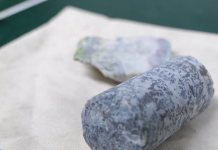BEIJING: In a Joint Statement between the People’s Republic of China and the Islamic Republic of Pakistan, the two sides agreed to make all possible efforts in support of greater civilizational exchanges between Pakistan and China and further expand cooperation for the conservation and presentation of heritage and artifacts of the two countries. The leaders welcomed the organizing of a Gandhara Art Exhibition at the Palace Museum in Beijing in 2022. New Immersive Technologies for Buddhist Gandhara culture heritage and art with guidance service based on enhanced public/user experience would be the first step to digitalizing Gandhara Buddhist Art, Pakistan also needs to learn and implement this new tech strategy.
Pakistan is the richest among the cultural heritage sites and its art around the world. There are hundreds of archaeological and historical sites that represent the Indus Valley Civilization and Gandhara Civilization.
Emerging “New Immersive Technologies”, Virtual Reality (VR), Augmented Reality (AR), and Mixed Reality (MR) capture people’s attention. It has become a part of different fields of life and has been applied in many sectors such as industry, medicine, video games education, and tourism, but so far “New Immersive Technologies”, Virtual Reality (VR), Augmented Reality (AR) and Mixed Reality (MR) is being used in the area of interest as leisure and entertainment. Recently, these emerging technologies also got practical attention in the preservation of historical art culture, and heritage. The advancement of technology computer graphics and immersive Virtual Reality or Augmented Reality systems supporting in cultural heritage for its preservation in multiple resources.
There are a lot of different examples that have been seen through which many societies have preserved their historical cultural heritage within a digitized form of conservations. Virtual and online exhibitions are the applications for the digitized steps towards cultural heritage preservations. Digitized technologies and computer graphic designing have opened new ways for transferring cultural heritage information as well as its preservation. For example, digital labs and virtual reality museums are giving new lives to dying cultures and heritage with their digital storage system.
The advancement in Virtual Reality and Augmented Reality technology has made it possible to construct large immersive and interactive virtual content in regards to cultural heritage. For example, In China, cultural heritage means a lot, and its preservation through advanced technology becomes more practically important than ever before.
In 2018-19 Publicity Department of Beijing, Haidian district committee of Communist Party of China (CPC), hosted a virtual exhibition named “Re-member” Three Hills and Five Gardens, applying the immersive technologies in terms of finding and enhancing the new designs for customers’ experience service systems. Three major sub-systems are developed, namely, VR immersive experience, AR interactive experience, and Mixed Reality including VR/AR, 360 degrees, art installation illustration, digital showcase, and sound interaction.
Pakistan has agreed with China on a very important note of organizing a Gandhara Art Exhibition at the Palace Museum in Beijing in 2022, I wish to see this exhibition as a virtual exhibition too as Beijing Palace Museum is one of the pioneer museums in the world that has already attained digitization and time by time exhibiting virtually by using all-new immersive techs. -Agencies





